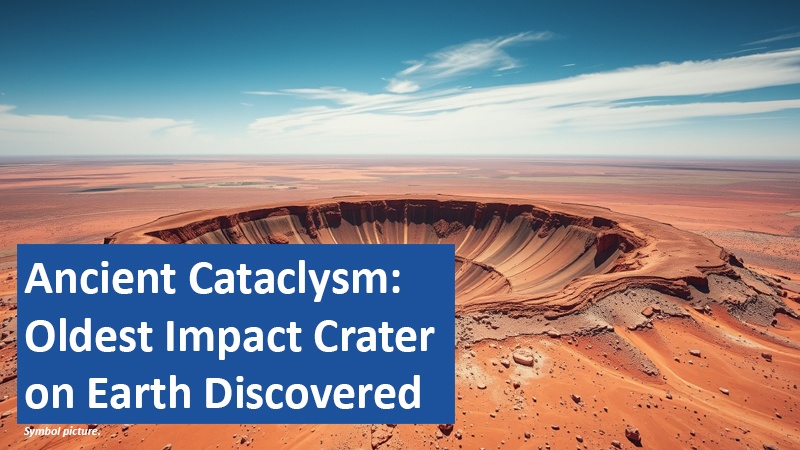
Researchers in Western Australia have found the remnants of a nearly 3.5-billion-year-old impact crater – making it the oldest worldwide. This groundbreaking discovery sheds new light on Earth’s early history and the role of massive impacts in shaping our planet’s evolution. The crater’s age and size suggest it could have had profound effects on the environment and potentially even influenced the emergence of life.
######################################################
Now exclusively try Amazon Prime and Prime Video free for 30 days!
##########################################################
Primordial Impact: Evidence of a High-Speed Collision
Impacts from asteroids and comets have shaped the development of our planet, potentially delivering water and the building blocks of life to the young Earth. However, they also triggered regional or even global catastrophes and mass extinctions, most recently around 66 million years ago with the “dino-killer” asteroid. Such larger impacts were particularly frequent in the first billion years of Earth’s history. The pressure marks, debris, and rock glass spherules found in the crater area testify to a high-speed impact that originally left behind a crater about 100 kilometers in size. It could have had regional, perhaps even global, consequences, as the team reports in “Nature Communications.”
The Challenge of Finding Ancient Craters
The problem, however, is that erosion, plate tectonics, and other geological processes have ensured that the craters from this early period have been destroyed, eroded, or covered by sediments. In addition, it is not always clear whether an impact really caused a crater. For example, the approximately three-billion-year-old Maniitsoq structure in Greenland turned out in 2021 not to be an impact crater, but of volcanic origin.
The Pilbara Craton: Following the Trail
“The oldest unambiguously identified terrestrial impact structure, the Yarrabubba impact crater in Western Australia, is only 2.23 billion years old,” report Christopher Kirkland of Curtin University in Perth and his colleagues. “This raises the question: Where are all the craters from the Archean?” To clarify this, Kirkland and his team followed a trail in the West Australian Pilbara Craton. This formation is one of the oldest on Earth and dates back to the period from 3.53 to 3.23 billion years ago.
Signs of the Oldest Impact
Within this ancient landscape, the researchers identified subtle clues indicating a massive impact event. These included deformed rock layers, shattered mineral grains, and telltale traces of impact debris scattered across a wide area. By analyzing the composition and structure of these materials, the team was able to reconstruct the scale and intensity of the impact.
Conclusion:
The discovery of the oldest impact crater provides valuable insights into the early bombardment history of Earth. The impact could have had far-reaching consequences for the planet’s environment and potentially influenced the evolution of early life. Further research will help to refine our understanding of this ancient cataclysm.
What do you think about this discovery? Share your thoughts in the comments.
Based on content from www.scinexx.de and additional research.